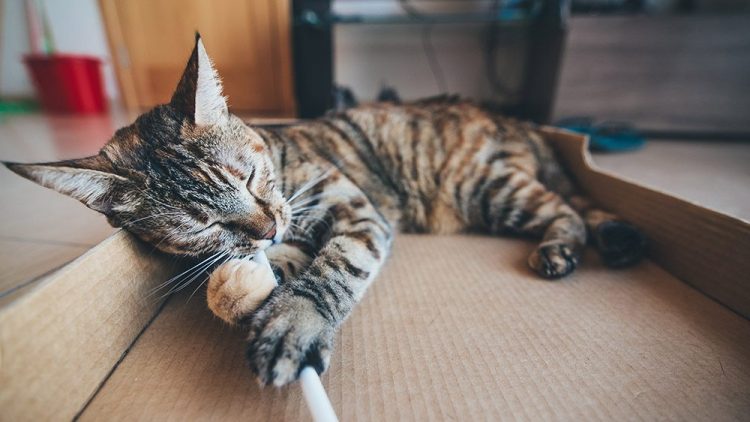These tips should not replace professional advice given by a qualified veterinarian, but rather to help guide you towards purchasing the correct (commercially available) product for your cat.
You should always consult a registered professional before undertaking any treatments.
1. Target the whole flea life-cycle
Most topical flea treatments are powered by insecticides. This is labeled as the “active ingredient” and is usually clearly labelled on any respected brand’s product.
Each of the many active ingredients that are suited for eliminating fleas have different benefits and risks.
To target the whole life cycle of a flea (from adult fleas right down to eggs & larvae), you’re best opting for a topical treatment that has active ingredient(s) proven to affect all stages of flea life.
Adult fleas are dealt with by insecticides known as adulticides. These come in many forms, most of which attack the nervous system to paralyze fleas quickly (sometimes 99%+ within 3 hours of application) and eventually leads to death.
Insect development inhibitors (IDIs) and Insect growth regulators (IGR) have a better effect on the immature stages of flea growth. They work by releasing insect growth hormones which (contrary to the name), slow down the growth and development of immature fleas.
You can often reduce the chances of a flea infestation significantly by combing regularly using a special flea comb. This will help to stop adult fleas getting a chance to settle in your cats coat, and potentially remove any eggs or larvae from the roots. Fleas that reside in carpets, bed linens or other furniture can be managed with the use of one of the best flea sprays for home.
2. Choose a proven active ingredient
Some common active ingredients include Imidacloprid, Pyriproxyfen, Fipronil, Spinetoram and Dinotefuran. You’ll often see these marketed under brand names, but the packaging should display the full active ingredient name also.
You’ll often see crazy combinations of these or similar ingredients that promise the world, but in most cases a single strong active ingredient (Spinetoram) is sufficient.
For products that use less potent active ingredients, it’s not uncommon to see two medium strength active ingredients (Imidacloprid & Pyriproxyfen) working together.
These sometimes consist of an IDI and a IGR so that both adult fleas and larvae are sufficiently targeted.
There are too many to list them all here, but it’s important to research the active ingredient in the products you find before making your purchase. They are often the same or similar ingredients that get used in collars that specialize in preventing fleas settling.
3. Weigh your cat beforehand
There’s a good reason manufacturers go to the trouble of making different variations of topical flea treatments for different weight ranges. It’s a matter of safety.
The dosage necessary to help combat fleas depends entirely on your cat’s weight. Applying a medicine intended for a 15lb+ cat on a cat that weights less than 9lbs is going to have a significantly stronger effect.
There are some real horror stories out there, so please be careful and purchase the correct dosage for your cat’s weight and age.
The same applies for products that aren’t specifically intended for use on cats. Do not apply topical flea treatments for dogs on cats of any size or age.
4. Stick with well known brands
As with any treatment of any kind, you want the product to be backed by a brand with a strong reputation. Flea treatments are no different.
A well known brand will have product reviews littered around the web, and consumer experiences that put your mind at ease as to the risks of using their product. Your cat’s well-being and safety should always be your number one priority.
You can also rest assured that topical flea treatment manufacturers will have thoroughly tested their products and the weight ranges/dosages will be perfectly balanced for efficiency and safety.
There’s also the worry of unproven products containing counterfeit chemicals or other ingredients that could be harmful to both yourself and your poor cat.
Did you find this article helpful?
